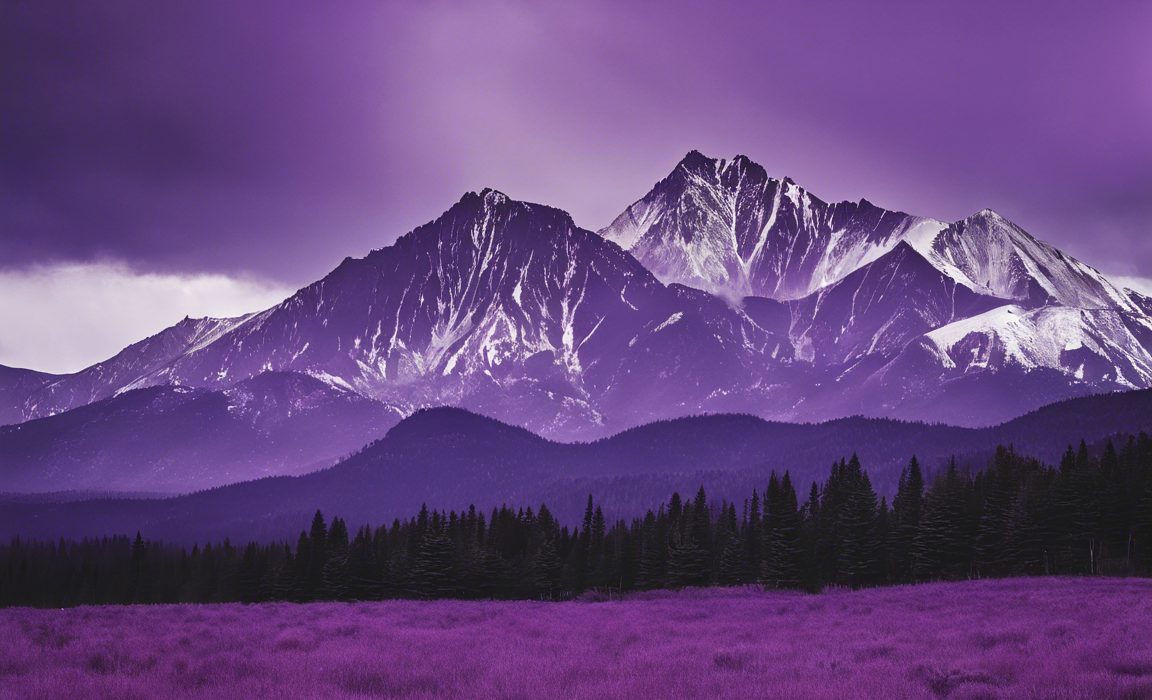Nestled within the grandeur of nature lies a sight that captivates the soul and stirs the imagination – the purple mountains. Swaying between shades of lavender, amethyst, and plum, these majestic peaks offer a breathtaking spectacle that inspires awe and wonder. As the sun sets in the horizon, casting a golden glow upon the rugged terrain, the purple mountains stand tall, a symbol of resilience and beauty in nature’s ever-changing landscape.
The Enchantment of Purple Mountains
Embracing Majesty: A Visual Feast
The allure of the purple mountains lies in their enchanting hue that sets them apart from their green and brown counterparts. The play of light and shadow on the rocky surfaces creates a mesmerizing effect, painting a picture of tranquility and grace. Whether shrouded in mist or bathed in sunlight, these peaks exude a mystical charm that entices adventurers and nature lovers alike.
A Symphony of Colors: Nature’s Palette
The purple mountains owe their distinctive color to a combination of factors, including the presence of minerals such as manganese and iron oxide in the soil and rocks. Over the centuries, geological processes have shaped and sculpted these peaks, giving rise to their unique violet tint. As the seasons change and the light shifts, the mountains don different shades of purple, creating a symphony of colors that speaks to the beauty of the natural world.
Journeying Through Purple Majesty
Hiking Trails: Paths Less Traveled
For those seeking to immerse themselves in the splendor of the purple mountains, hiking trails offer a way to explore their rugged terrain up close. From gentle slopes to challenging peaks, these trails wind their way through forests, meadows, and streams, providing hikers with a glimpse of the diverse flora and fauna that call this landscape home. As you trek through the purple mountains, you’ll encounter breathtaking vistas, hidden waterfalls, and secluded valleys that beckon you to uncover their secrets.
Wildlife Encounters: Nature’s Playground
The purple mountains are not just a feast for the eyes but also a haven for wildlife. From elusive mountain goats and bighorn sheep to playful marmots and soaring eagles, these peaks teem with creatures big and small. Birdwatchers will delight in spotting rare avian species, while animal lovers can catch a glimpse of deer, elk, and other woodland denizens. As you journey through the purple mountains, keep your eyes peeled for signs of life and listen to the symphony of sounds that fills the air.
Protecting the Legacy of Purple Mountains
Environmental Conservation: Preserving Natural Heritage
As visitors flock to the purple mountains in search of adventure and serenity, it is essential to uphold principles of environmental conservation to ensure that these peaks remain pristine for future generations. Responsible tourism practices, such as Leave No Trace guidelines and wilderness ethics, help minimize human impact on the land and protect fragile ecosystems. By treading lightly and respecting wildlife habitats, we can safeguard the legacy of the purple mountains and uphold their majesty for years to come.
Sustainable Tourism: Balancing Access and Preservation
Balancing the needs of tourism with the imperatives of conservation is a delicate dance that requires careful planning and stewardship. Sustainable tourism initiatives, such as eco-friendly accommodations, renewable energy solutions, and community engagement programs, can help preserve the purple mountains while also supporting local economies and livelihoods. By promoting responsible travel practices and fostering a culture of environmental stewardship, we can ensure that the beauty of these peaks endures for generations to come.
FAQs
Q1: What causes the purple hue of the mountains?
A1: The purple hue of the mountains is often a result of the presence of minerals like manganese and iron oxide in the soil and rocks, coupled with geological processes that have shaped the landscape over time.
Q2: Are there hiking trails in the purple mountains?
A2: Yes, there are hiking trails that wind through the purple mountains, offering adventurers the opportunity to explore their rugged terrain and breathtaking vistas.
Q3: What kind of wildlife can be found in the purple mountains?
A3: The purple mountains are home to a diverse array of wildlife, including mountain goats, bighorn sheep, marmots, eagles, deer, and elk, among others.
Q4: How can visitors contribute to the conservation of the purple mountains?
A4: Visitors can contribute to the conservation of the purple mountains by practicing Leave No Trace principles, respecting wildlife habitats, and supporting sustainable tourism initiatives that prioritize environmental preservation.
Q5: What are some sustainable tourism practices that can help protect the purple mountains?
A5: Sustainable tourism practices such as eco-friendly accommodations, renewable energy solutions, and community engagement programs can help balance access to the purple mountains with the imperative of preserving their natural beauty.
In conclusion, the purple mountains stand as a testament to the enduring power and beauty of nature. From their enchanting hue to their rugged terrain, these peaks captivate the imagination and inspire a sense of wonder and humility. By exploring the purple mountains with a spirit of respect and awe, we not only connect with the natural world but also commit to safeguarding its legacy for future generations to cherish and behold.


